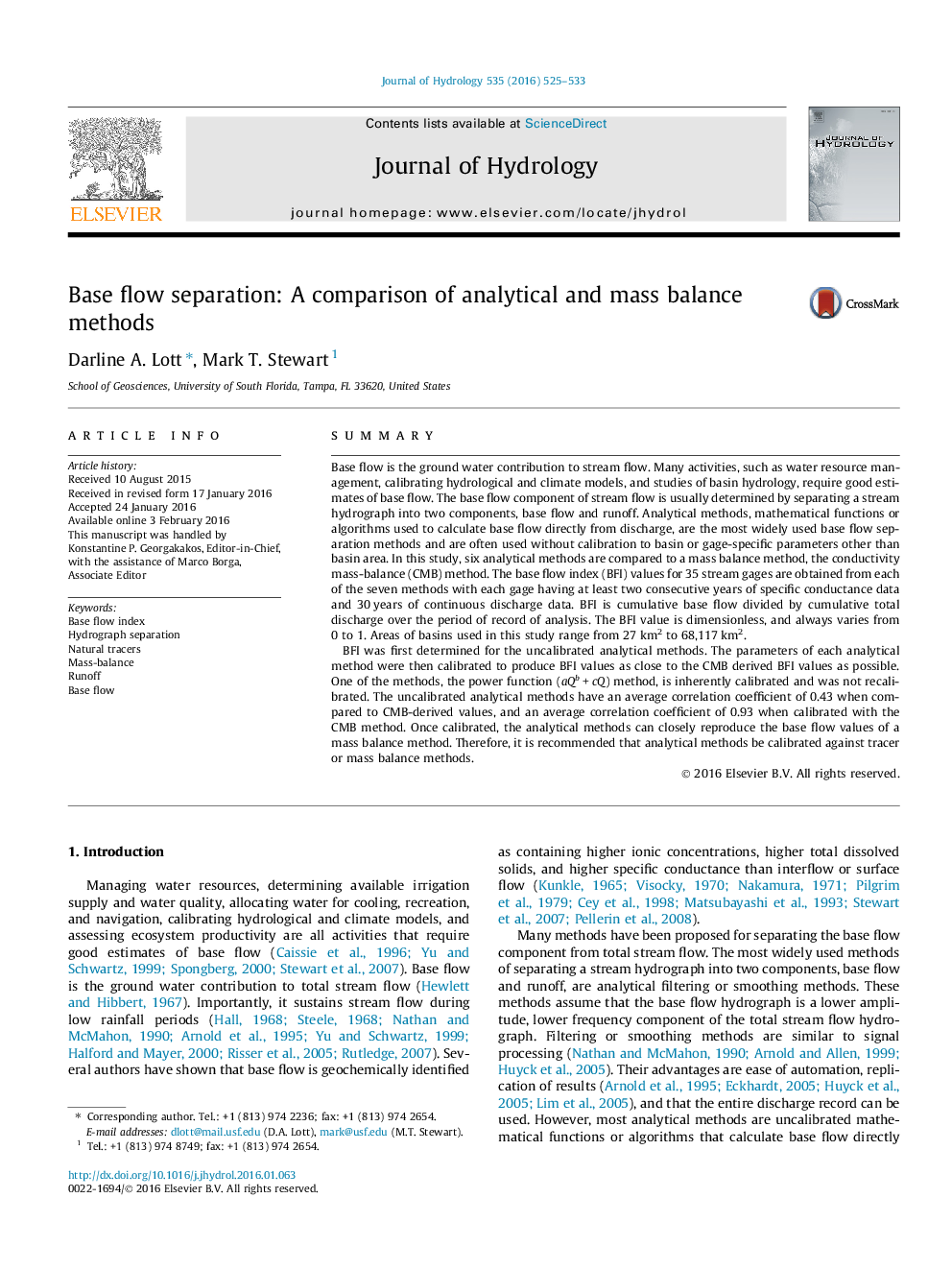| Article ID | Journal | Published Year | Pages | File Type |
|---|---|---|---|---|
| 6410153 | Journal of Hydrology | 2016 | 9 Pages |
â¢We compared six analytical methods BFI values to a mass balance method, the CMB method.â¢One of six analytical methods, power function method best matched mass balance method.â¢Five un-calibrated analytical base flow methods did not match the mass balance method.â¢After calibration, analytical methods closely matched the mass balance method.
SummaryBase flow is the ground water contribution to stream flow. Many activities, such as water resource management, calibrating hydrological and climate models, and studies of basin hydrology, require good estimates of base flow. The base flow component of stream flow is usually determined by separating a stream hydrograph into two components, base flow and runoff. Analytical methods, mathematical functions or algorithms used to calculate base flow directly from discharge, are the most widely used base flow separation methods and are often used without calibration to basin or gage-specific parameters other than basin area. In this study, six analytical methods are compared to a mass balance method, the conductivity mass-balance (CMB) method. The base flow index (BFI) values for 35 stream gages are obtained from each of the seven methods with each gage having at least two consecutive years of specific conductance data and 30 years of continuous discharge data. BFI is cumulative base flow divided by cumulative total discharge over the period of record of analysis. The BFI value is dimensionless, and always varies from 0 to 1. Areas of basins used in this study range from 27 km2 to 68,117 km2.BFI was first determined for the uncalibrated analytical methods. The parameters of each analytical method were then calibrated to produce BFI values as close to the CMB derived BFI values as possible. One of the methods, the power function (aQb + cQ) method, is inherently calibrated and was not recalibrated. The uncalibrated analytical methods have an average correlation coefficient of 0.43 when compared to CMB-derived values, and an average correlation coefficient of 0.93 when calibrated with the CMB method. Once calibrated, the analytical methods can closely reproduce the base flow values of a mass balance method. Therefore, it is recommended that analytical methods be calibrated against tracer or mass balance methods.
